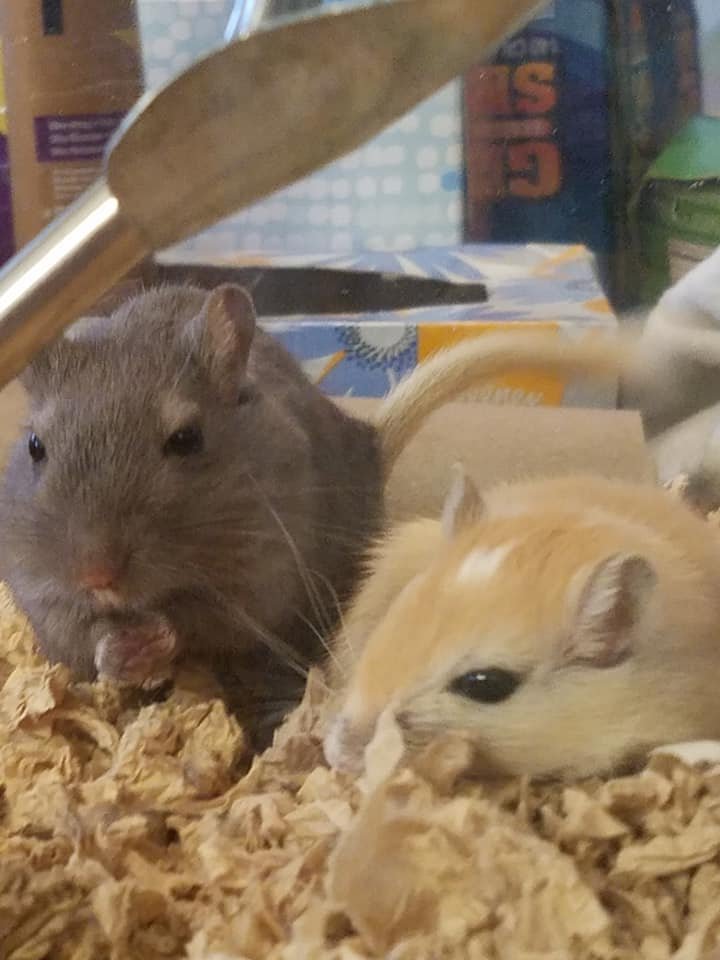
Agouti gerbils are known for their charming coat color that resembles the natural, wild look, typically featuring a mix of brown and gray tones. They are captivating both for their appearance and their behavior. Breeding them can be rewarding, but it also requires a fair share of responsibility and knowledge. In this post, I’ll share everything you should know before you embark on this journey.
Understanding Agouti Gerbils
Before you dive into breeding, let’s take a moment to understand what Agouti gerbils are all about. These little furballs are a specific color form of the Mongolian gerbil, which is the most common species kept as pets. The Agouti coat pattern is characterized by a unique structure where each hair is banded with multiple colors, giving them that lovely, wild appearance.
Agouti gerbils are not just pretty faces; they have unique temperaments, too. They are typically friendly, curious, and social, making them great pets. You might find that they enjoy exploring their environment, burrowing, and even playing with toys. When considering breeding, it’s important to remember that a positive temperament in the parent gerbils often translates to their babies.
Moreover, Agouti is often considered the “default” color in gerbils. This means that if you breed an Agouti with another color, there’s a good chance the offspring will be Agouti as well. If you’re thinking about a more varied color palette, you might want to research the genetics a bit more.
Creating the Right Environment for Breeding
To successfully breed Agouti gerbils, you’ll need to set up an environment that supports their needs. Start with a spacious cage—ideally at least 20 gallons—because these lively creatures love to roam. Make sure it’s well-ventilated and escape-proof, as gerbils can be surprisingly crafty.
When furnishing the cage, think of it as creating a cozy little apartment for your gerbils. Include plenty of bedding for burrowing, like aspen shavings or paper-based substrates. Gerbils have a natural instinct to dig, so providing a few inches of bedding will keep them happy.
Add in some hiding spots with tunnels and small houses where they can retreat when they need a break. Don’t forget exercise wheels or chew toys, as these help keep your gerbils active and entertained. A happy gerbil is a healthy gerbil, and that’s crucial when it comes time to breed.
Choosing the Right Breeding Pairs
You might be eager to start breeding your Agouti gerbils, but choosing the right pairs is essential. Ideally, you want to select healthy gerbils with good temperaments. Look for individuals that are active and curious; these traits are not just adorable but also indicate good health.
It’s also important to consider genetics when choosing your breeding pair. Agouti is a dominant color, meaning that if you mate an Agouti gerbil with a different color, the chances are high that the offspring will be Agouti. However, if you want to explore more colors in your gerbil family, it helps to research color genetics a bit or consult with experienced breeders.
When introducing breeding pairs, make sure they have enough space and privacy to get used to each other. Sometimes, a little courtship is necessary before they settle into a comfortable routine. Patience is key here.
Signs of Pregnancy in Gerbils
Once you’ve successfully paired your Agouti gerbils, it’s time to keep an eye out for signs of pregnancy. Female gerbils typically have a gestation period of about 24 to 26 days, and they can have litters ranging from 2 to 8 pups.
Some common signs that your female may be pregnant include:
- Behavioral Changes: She may become more reclusive, seeking out hidden spots in her cage.
- Weight Gain: You’ll notice she’s putting on weight, especially around her belly as the pregnancy progresses.
- Nesting Behavior: You might see her gathering bedding materials to create a nest.
Being attentive to these changes can help you prepare for the arrival of the little ones. Make sure she has everything she needs: a cozy nesting area, fresh food and water, and minimal disturbances. It’s like getting ready for a houseguest—you want everything to be just right!
Caring for Newborn Gerbil Pups
Once the pups arrive, you’ll find yourself in a whirlwind of excitement! Mother gerbils are typically very attentive. They’ll nurse and care for their young, so it’s crucial to leave them undisturbed for the first few weeks.
During this time, make sure to provide the mother with plenty of fresh food and water. She’ll need extra energy as she nurses her pups. You might also want to provide supplemental protein sources, like small amounts of boiled egg or mealworms, which can be great for a nursing mother.
Once the pups are around three weeks old, they’ll start becoming more independent. It’s a good idea to begin handling them gently at this stage. This socialization is key in ensuring they grow up to be friendly and well-adjusted pets.
Finding Good Homes for Gerbil Pups
As the pups grow, you might find yourself thinking about what to do with them once they’re ready for new homes. It’s always a tough decision, especially when you’ve become attached. You want to ensure they go to loving families.
Here are a few options for finding homes:
- Friends and Family: Start by asking those close to you. They might be looking for a pet, and you can ensure they’ll take good care of your little gerbils.
- Online Community: Local forums or social media groups are great places to connect with potential adopters.
- Pet Stores: Some local pet shops may be willing to take them, but it’s essential to choose one that treats animals well.
When rehoming, don’t forget to provide new owners with information about caring for gerbils. A little guidance from you can go a long way in ensuring a smooth transition.
Common Challenges and Solutions
Like any venture, breeding Agouti gerbils comes with its set of challenges. One common issue is dealing with unexpected litters. Sometimes, you might not realize a female is pregnant, or she may have a larger litter than anticipated.
You can manage this by being prepared. Have extra cages and supplies on hand, just in case. If the sheer number of pups becomes overwhelming, remember: it’s okay to seek help from other breeders or local rescue organizations.
Additionally, watch for signs of aggression if you’re keeping multiple males together. Males can sometimes fight, especially if they feel threatened or crowded. Providing enough space and hiding spots can help mitigate these issues.
Breeding Agouti gerbils can be a fulfilling experience, but it’s not without its challenges and responsibilities. By understanding their needs and preparing a suitable environment, you’re setting yourself up for success. Remember to choose healthy pairs, care for the mother and pups, and find loving homes when the time comes.
Most importantly, enjoy the journey and the unique bond that comes with raising these delightful creatures. Whether you’re in it for the joy of breeding or just to expand your family, every little moment will be worth it. Happy breeding!

